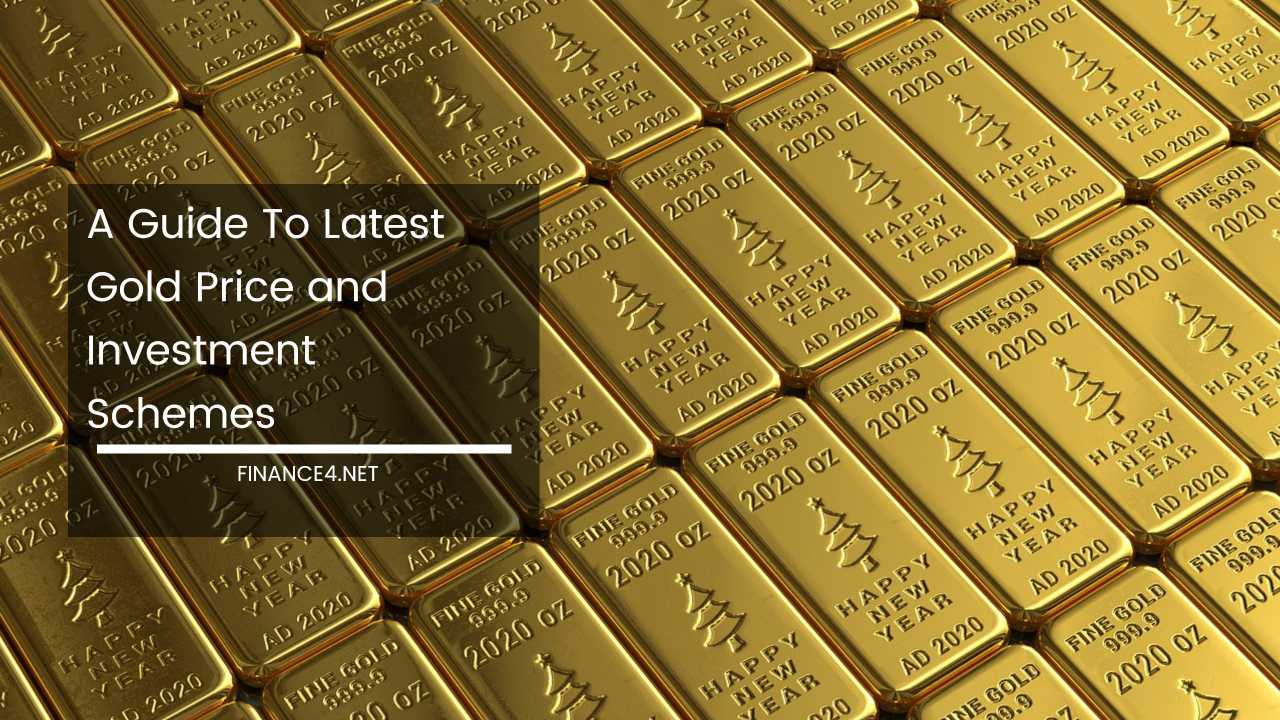A Guide to Latest Gold Price and Investment Schemes

Unlocking the Potential of Gold: A Comprehensive Guide to Understanding Prices, Trends, and Investment Strategies
In the labyrinth of financial markets, few assets hold the allure and mystique of gold. Revered for millennia as a symbol of wealth and stability, gold continues to captivate investors’ imaginations, promising both security and opportunity.
However, navigating the intricacies of the gold market requires a deep understanding of its dynamics, trends, and investment strategies.
This comprehensive guide aims to shed light on the multifaceted world of gold investment, equipping readers with the knowledge to make informed decisions in pursuit of financial success.
The Ever-Evolving Gold Market:
Gold, often referred to as the “king of metals,” has long held a central role in human civilization. From ancient civilizations to modern financial systems, its intrinsic value and scarcity have rendered it an enduring store of wealth.
In the contemporary financial landscape, the gold market remains a dynamic and influential force, shaped by a myriad of factors ranging from geopolitical tensions to macroeconomic trends.
Understanding Gold Price Dynamics:
Central to comprehending the gold market is an understanding of the factors driving its price dynamics. While numerous variables influence gold prices, several key determinants stand out:
- US Dollar Strength: Historically, gold prices have exhibited an inverse relationship with the strength of the US dollar. As the dollar strengthens, the purchasing power of other currencies diminishes, driving demand for gold as a hedge against inflation and currency devaluation.
- Geopolitical Uncertainty: Geopolitical tensions, geopolitical instability, and geopolitical events can spark a flight to safety, propelling gold prices higher. In times of geopolitical turmoil, investors flock to gold as a safe haven asset, seeking refuge from market volatility and political uncertainty.
- Interest Rates and Inflation: Gold prices are also influenced by interest rates and inflation expectations. When interest rates are low or inflation is high, the opportunity cost of holding gold decreases, making it more attractive to investors.
- Supply and Demand Dynamics: Like any commodity, gold prices are subject to the laws of supply and demand. While gold is relatively scarce, fluctuations in mining output, central bank reserves, and jewelry demand can impact its price trajectory.
Navigating Market Volatility:
Despite its reputation as a safe haven asset, the gold market is not immune to volatility. Indeed, the past decade has seen significant fluctuations in gold prices, driven by a confluence of global events and economic factors.
From the financial crisis of 2008 to the COVID-19 pandemic, gold has experienced periods of both rapid ascent and sharp correction.
Investment Strategies in the Gold Market:
For investors seeking to capitalize on the potential of gold, a myriad of investment strategies are available, each with its own risk-reward profile. Some popular strategies include:
- Physical Gold Ownership: For traditionalists and long-term investors, owning physical gold in the form of bars, coins, or bullion offers tangible security and peace of mind. While physical gold incurs storage costs and logistical challenges, it provides a tangible hedge against systemic risk and currency devaluation.
- Gold Exchange-Traded Funds (ETFs): Gold ETFs represent a convenient and liquid means of gaining exposure to the gold market without the logistical hassles of physical ownership. These investment vehicles track the price of gold and are traded on major stock exchanges, offering investors flexibility and diversification.
- Gold Mining Stocks: Investing in gold mining companies provides exposure to the potential upside of gold prices while leveraging the operational expertise and exploration activities of mining firms. However, mining stocks are subject to company-specific risks, geopolitical factors, and operational challenges.
- Derivative Instruments: Sophisticated investors may choose to trade gold futures, options, or other derivative instruments to capitalize on short-term price movements or hedge against portfolio risk. While derivatives offer leverage and liquidity, they also entail heightened risk and complexity.
Analyzing Gold ETFs:
Of the various investment vehicles available in the gold market, Gold ETFs have garnered significant attention from investors seeking a balance of convenience and performance.
These funds invest in physical gold bullion and aim to replicate the price movements of the underlying asset. Key advantages of Gold ETFs include:
- Liquidity and Accessibility: Gold ETFs trade on major stock exchanges, offering investors instant liquidity and real-time pricing.
- Diversification: By investing in a Gold ETF, investors gain exposure to a diversified portfolio of gold assets, mitigating idiosyncratic risk.
- Cost Efficiency: Compared to physical gold ownership, Gold ETFs entail lower transaction costs, storage fees, and administrative burdens.
- Tax Benefits: Depending on jurisdiction, investments in Gold ETFs may qualify for favorable tax treatment, further enhancing their appeal to investors.
Comparing Gold to Other Asset Classes:
In the pursuit of portfolio diversification and risk management, investors often compare gold to other asset classes, such as equities, bonds, and real estate. While each asset class offers unique benefits and risks, gold stands out for its:
- Inverse Correlation to Equities: Gold has historically exhibited a negative correlation to equities, making it an effective hedge against stock market downturns.
- Preservation of Purchasing Power: Unlike fiat currencies prone to inflation and devaluation, gold has maintained its purchasing power over time, making it a reliable store of value.
- Limited Supply and Intrinsic Value: With finite global reserves and enduring cultural significance, gold possesses inherent scarcity and intrinsic value, distinguishing it from other assets.
Final Remakrs:
In conclusion, the gold market presents a wealth of opportunities for investors seeking stability, diversification, and long-term wealth preservation.
By understanding the underlying dynamics of gold prices, navigating market volatility, and deploying appropriate investment strategies, investors can unlock the full potential of this timeless asset.
Whether through physical ownership, Gold ETFs, or derivative instruments, gold offers a compelling avenue for wealth accumulation and portfolio protection in an ever-changing financial landscape.
As the age-old adage goes, “all that glitters is not gold,” but in the case of the gold market, the allure and potential of this precious metal are indeed worthy of exploration and investment.



